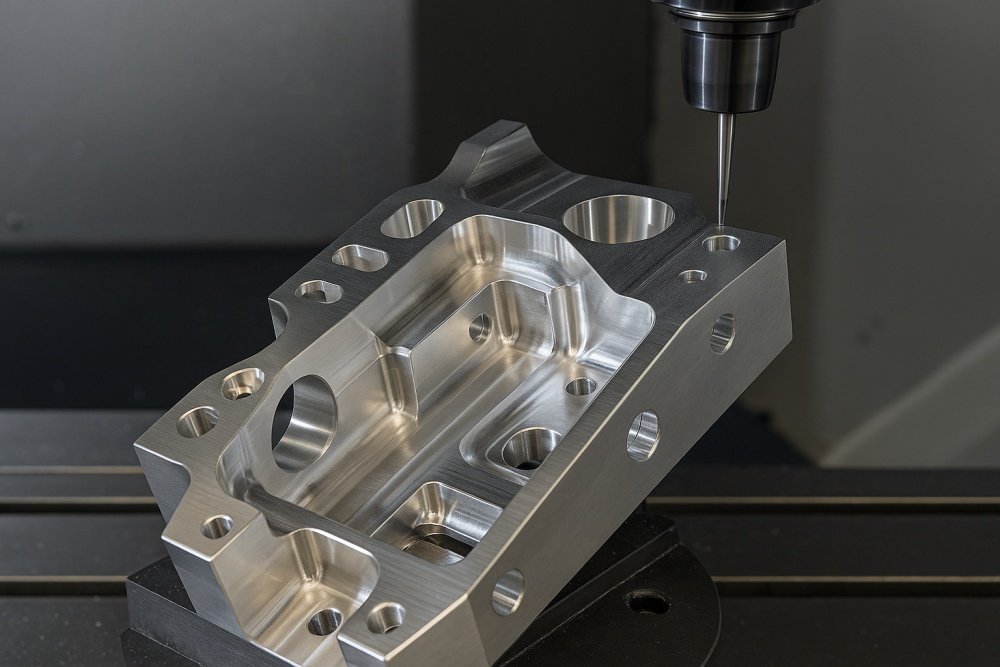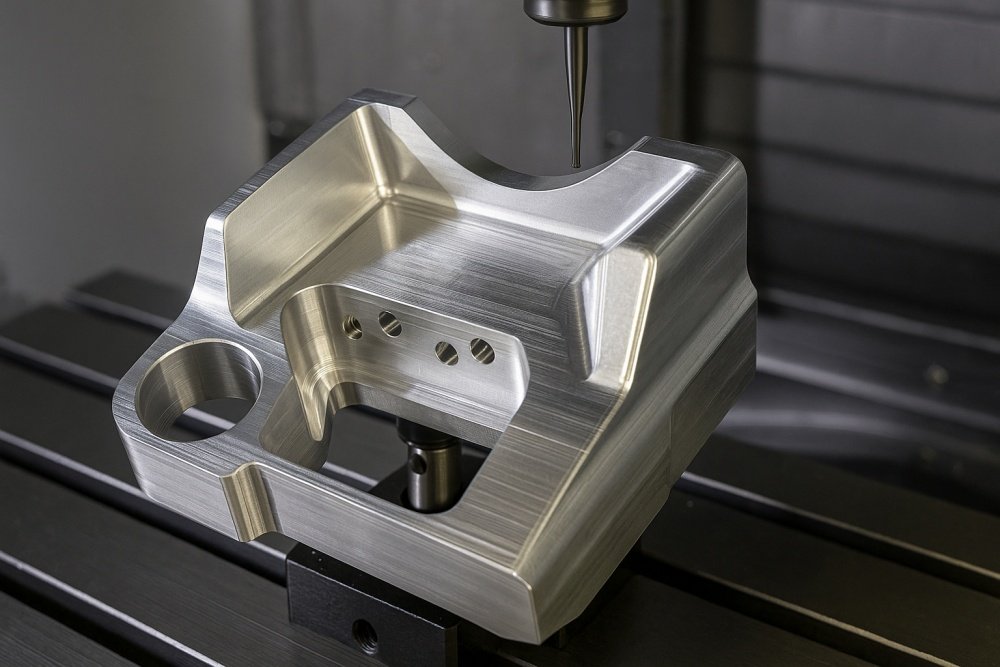Modern engineering is developing faster than ever, the journey from a digital concept to a tangible, high-performance part is paved with critical decisions. None is more fundamental than the choice of material. For computer-numerical control (CNC) machining, a process renowned for its accuracy and versatility, the material selected dictates not only the final component’s strength, weight, and durability but also the efficiency and cost of the entire production cycle.
Whether you are developing lightweight aerospace components, rugged industrial machinery, or sophisticated medical devices, understanding the distinct characteristics of different metals is paramount. Aluminum and steel stand out as two of the most popular and versatile choices for machined parts, yet their properties could not be more different.
This guide provides a deep dive into the unique advantages of both CNC machined aluminum and steel, helping you determine which material is the optimal fit to ensure your parts are not just made, but engineered to perform.

The Lightweight Champion: The Case for CNC Machined Aluminum
When a project demands a combination of low weight, significant strength, and excellent corrosion resistance, aluminum alloys are often the unrivaled choice. Aluminum’s exceptional machinability and thermal conductivity have secured its place as a cornerstone material in aerospace, automotive, robotics, and high-performance consumer electronics.
Key Properties and Advantages:
- Excellent Strength-to-Weight Ratio: This is aluminum’s most celebrated trait. It allows for the creation of strong, rigid components that are significantly lighter than their steel counterparts. This is critical for improving fuel efficiency in vehicles and aircraft, and for enabling faster, more agile movements in automation systems.
- Superior Corrosion Resistance: Aluminum naturally forms a protective, passive oxide layer on its surface, which shields it from oxidation and corrosion in most environments. This inherent resistance can be dramatically enhanced through surface treatments.
- High Thermal & Electrical Conductivity: Aluminum is an excellent conductor of heat and electricity, making it an ideal material for applications requiring efficient thermal management, such as heat sinks, electronic enclosures, and computer components.
- Exceptional Machinability: Aluminum is softer and easier to cut than steel, which translates into faster machining times, reduced tool wear, and lower manufacturing costs. This makes it perfect for rapid prototyping and high-volume production runs.
Common Alloys and Their Uses:
- Aluminum 6061: Often called the “workhorse” alloy, 6061 offers a great mix of strength, corrosion resistance, and machinability. It is widely used for structural components, electronic panels, and machine parts.
- Aluminum 7075: Known for its steel-like strength, this high-performance alloy is a favorite in the aerospace and defense industries for highly stressed structural parts and critical components.
Finishing Options for Aluminum Parts:
The versatility of aluminum extends to its finishing options. Anodizing is a popular electrochemical process that increases the thickness of the natural oxide layer, drastically improving hardness, wear resistance, and corrosion protection while allowing for a variety of vibrant color finishes. Other options include bead blasting for a uniform matte finish, polishing for a mirror-like appearance, and powder coating for a durable, protective layer.
Ideal Applications: Aircraft components, drone frames, automotive lightweighting parts, robotics, medical device housings, and consumer electronics casings.
The Unyielding Powerhouse: The Power of CNC Machined Steel
When absolute strength, hardness, and durability are non-negotiable, steel remains the undisputed king. Its vast range of alloys—from versatile carbon steels to corrosion-resistant stainless grades—allows engineers to tailor its properties for the most demanding industrial environments where failure is not an option.

Key Properties and Advantages:
- Unmatched Strength and Hardness: Steel provides exceptional tensile strength and hardness, enabling it to withstand extreme loads, high impacts, and abrasive wear. This makes it essential for components in heavy machinery, industrial tooling, and automotive powertrains.
- Outstanding Durability and Fatigue Resistance: Steel components maintain their structural integrity over long periods of high-stress use, offering superior fatigue resistance. This longevity is crucial for parts that are foundational to a system’s reliability.
- Cost-Effectiveness for Strength: For applications where weight is not the primary concern, steel often provides the most strength per dollar, making it an economical choice for structural and high-wear parts.
- Versatility Through Heat Treatment: One of steel’s greatest advantages is its ability to have its mechanical properties profoundly altered through heat treatment. Processes like quenching, tempering, and annealing can be used to precisely control its hardness, toughness, and ductility to meet specific functional requirements.
Common Grades and Their Uses:
- Carbon Steels (e.g., 1018, 1045): Valued for their strength and cost-effectiveness, they are used in general machinery, structural parts, and fixtures.
- Stainless Steels (e.g., 304, 316): Offering excellent corrosion resistance, these are ideal for medical instruments, food processing equipment, and marine applications.
- Tool Steels (e.g., A2, D2): These are exceptionally hard and wear-resistant after heat treatment, making them perfect for manufacturing dies, molds, and cutting tools.
Advanced Post-Processing for Steel:
Beyond standard machining, steel components often undergo heat treatment to enhance performance. This can harden the material to resist wear, improve its dimensional stability, or increase its toughness to prevent fracture. Surface treatments like black oxide coating or nickel plating can be applied to further improve corrosion resistance and appearance.
Ideal Applications: Gears and shafts for heavy machinery, engine and transmission components, industrial molds and fixtures, and defense hardware.
The Process: From Digital Design to Finished Component
Regardless of the material chosen, turning a design into a high-quality finished part involves a meticulous production process centered on precision.
- Design Review (DFM): The process begins with a Design for Manufacturability analysis of the CAD files to ensure the design is optimized for efficiency and cost-effectiveness.
- Material Selection: Based on the application’s specific requirements, the most suitable grade of aluminum or steel is selected and inspected for quality.
- Precision Programming: Expert programmers use CAM software to generate the optimal toolpaths for advanced 3, 4, or 5-axis CNC machines.
- High-Accuracy Machining: The part is machined to exact specifications, with modern equipment capable of achieving tolerances as tight as ±0.01mm (±0.0004″).
- Finishing and Post-Processing: The machined parts undergo any required secondary operations, such as deburring, surface finishing, or heat treatment.
- Rigorous Quality Inspection: Every component is thoroughly inspected using advanced metrology equipment, like Coordinate Measuring Machines (CMMs), to guarantee it meets all dimensional and functional requirements before delivery.
Conclusion: Making the Right Choice for Your Project
The choice between aluminum and steel is not about which material is better, but which is right for the application.
- Choose aluminum when your primary concerns are low weight, corrosion resistance, and thermal conductivity. It is the modern choice for speed, agility, and efficiency.
- Choose steel when you need uncompromising strength, hardness, wear resistance, and durability in demanding environments.
By understanding the fundamental trade-offs between these two remarkable materials, you can ensure that your next CNC machining project is built on a foundation of excellence, ready to meet and exceed performance expectations.
